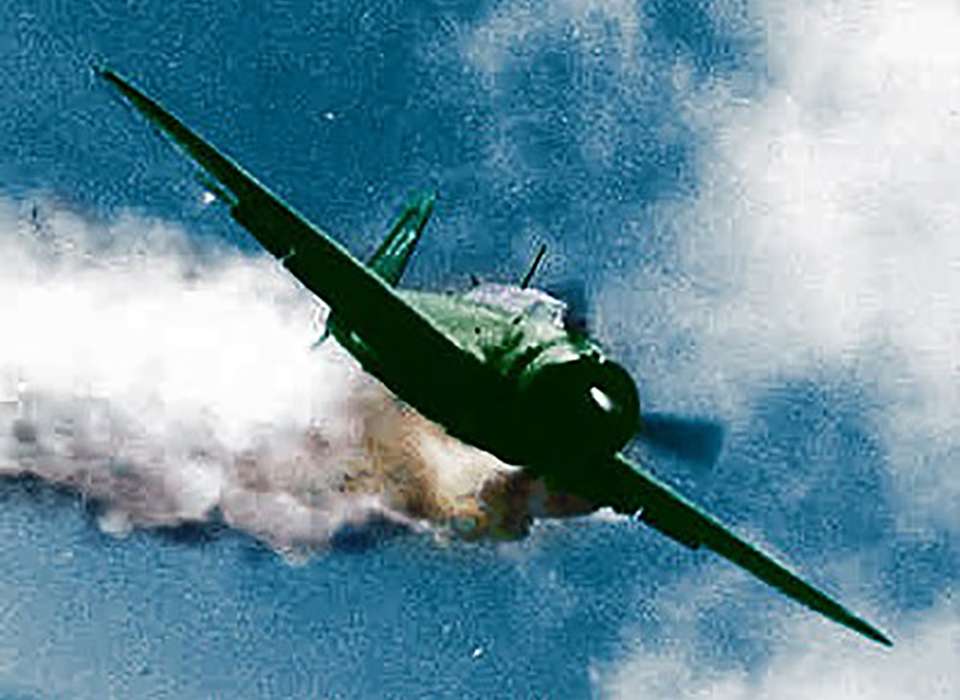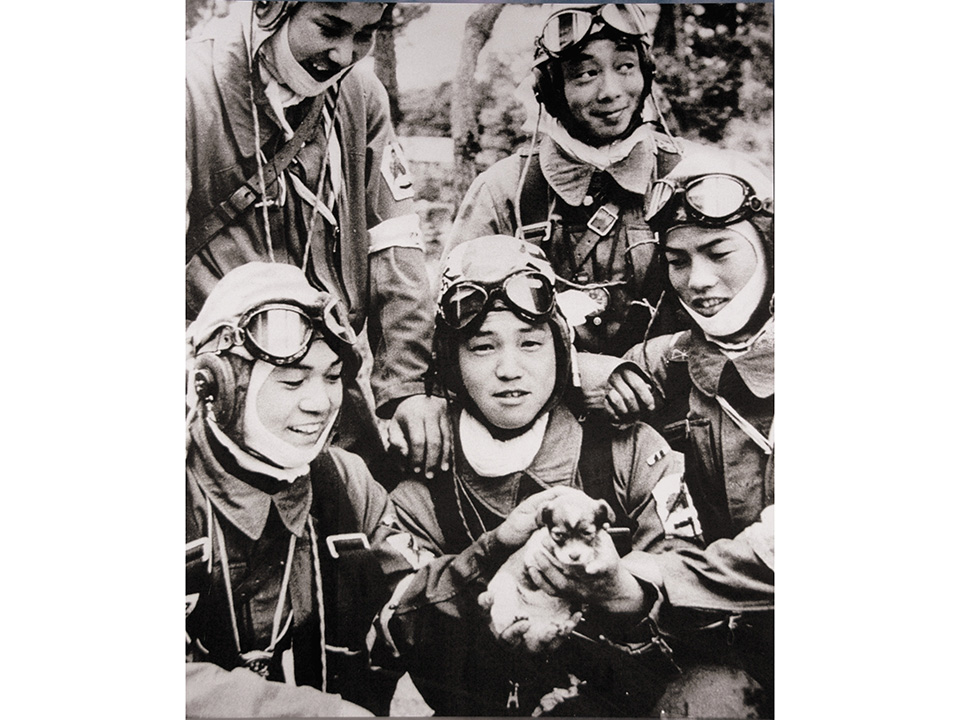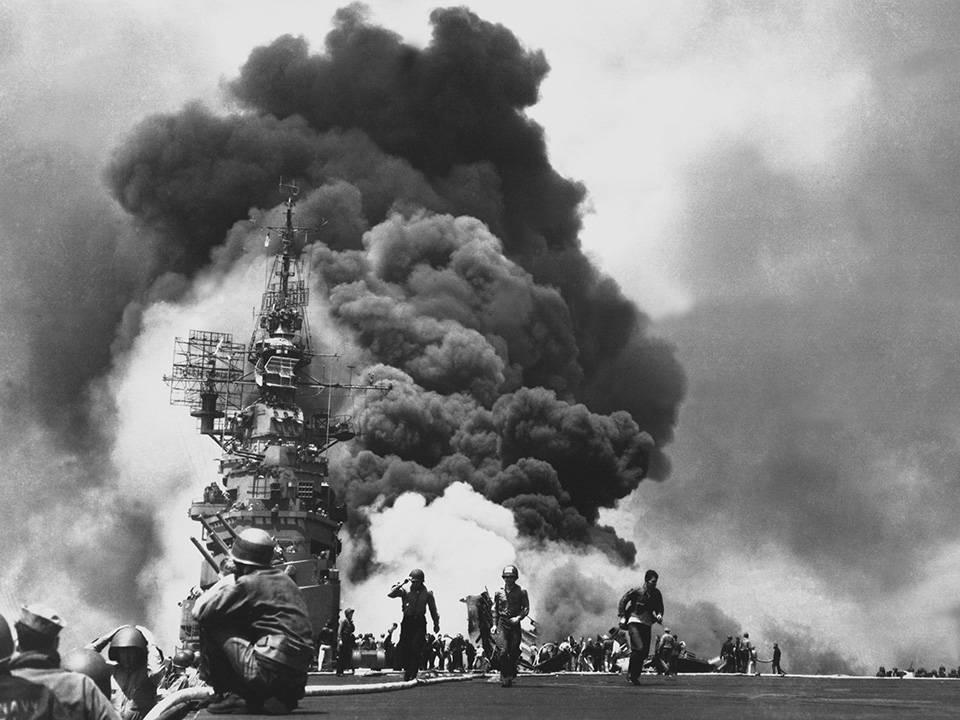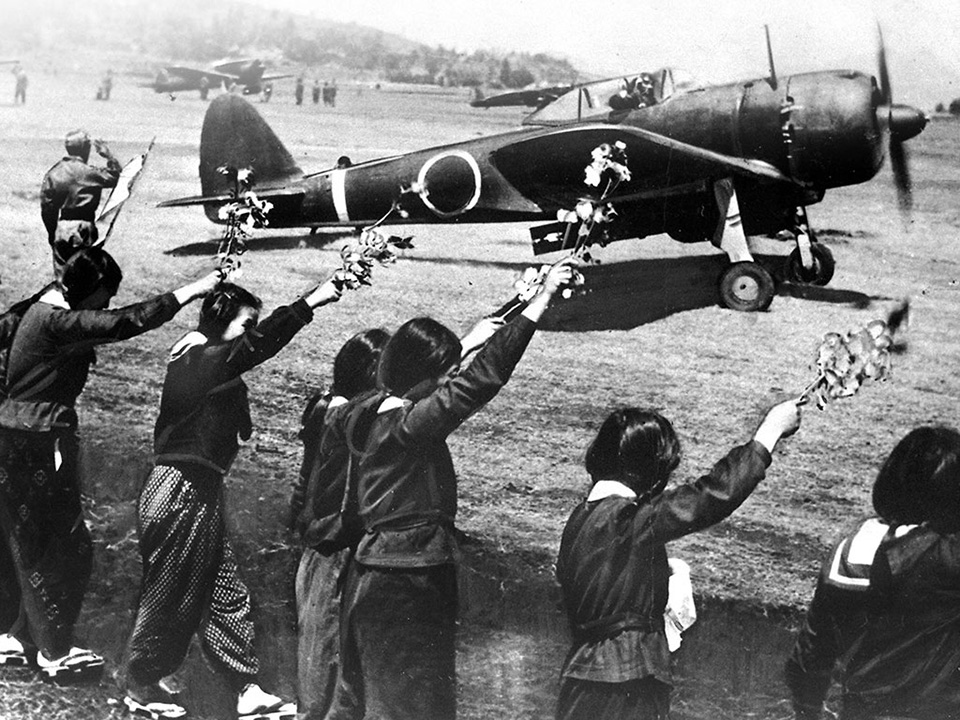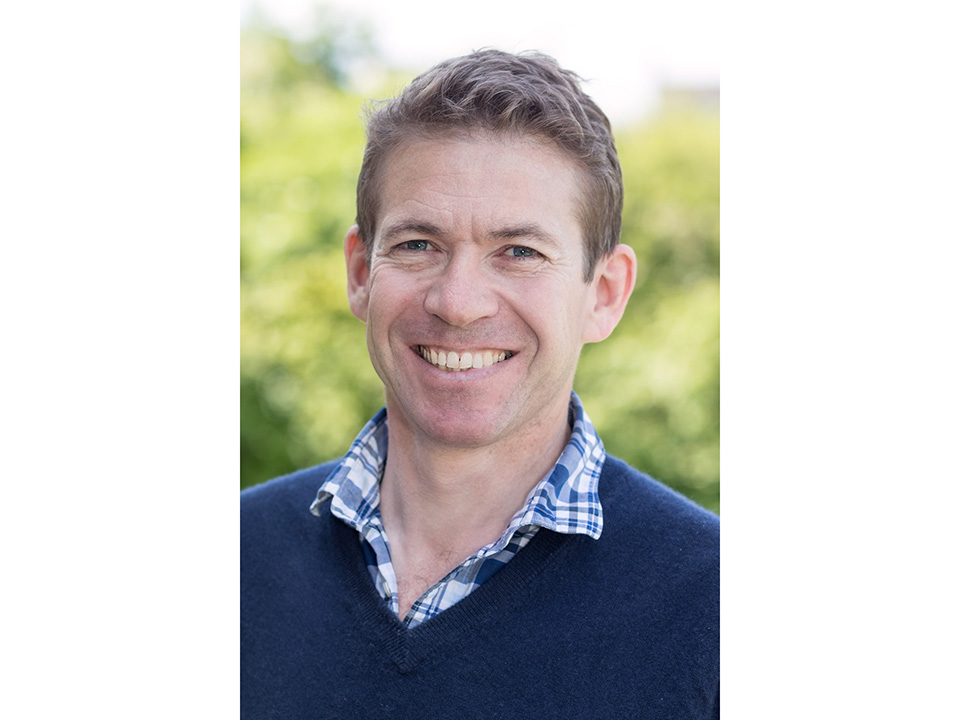Flight Lieutenant Haruo Araki’s hand shook as he composed a last letter to his wife of just a month:
Shigeko,
Are you well? It is now a month since that day. The happy dream is over. Tomorrow I will dive my plane into an enemy ship. I will cross the river into the other world, taking some Yankees with me. When I look back, I see that I was very cold-hearted to you. After I had been cruel to you, I used to regret it. Please forgive me.
When I think of your future, and the long life ahead, it tears at my heart. Please remain steadfast and live happily. After my death, please take care of my father for me.
I, who have lived for the eternal principles of justice, will forever protect this nation from the enemies that surround us.
Commander of the Air Unit Eternity
Haruo Araki
The letter was written at Chiran Air Base, Kyushu, on the evening of May 10, 1945. Haruo had already penned a note to his father, mentioning that he had flown over the family house at the end of April, circling many times in the hope that his father might see him. But he had not looked up from his work in the fields. “Father,” wrote Haruo, “I was unable to catch your attention.” Having sealed both letters, Haruo handed them to a visiting journalist who had promised to deliver them in person.
Early the following morning, the journalist took some photos of the airman before he left on his mission. One was with his two group leaders: all three were 21 years old and had graduated from the Military Academy in the 57th Class. Another showed Haruo giving the final address to his fellow kamikazes (named after the “divine wind” that had destroyed the Mongol fleet in the thirteenth century, thus saving Japan from invasion.) He was smiling, “conscious of the camera." On his forehead he was wearing a white headband with Japan’s rising-sun emblem. The students at the girls’ school near the base had “cut their fingers and filled in the red sun with their own blood." Copies of these photos were later given to Haruo’s wife.
Finally, at 6 a.m., Haruo took off in the lead plane, one of 150 aircraft to take part in the sixth mass kamikaze attack against Allied shipping near Okinawa on May 10-11. Haruo’s fate is unknown. It is just possible, however, that his plane was one of two that struck Vice Admiral Mitscher’s flagship aircraft carrier USS Bunker Hill on May 11, causing extensive fires and killing 396 men (including fourteen of Mitscher’s staff, most to smoke inhalation) and wounding 264, the worst casualties since the USS Franklin. Though still afloat, the USS Bunker Hill was out of action for the rest of the war, forcing Mitscher to transfer his flag to USS Enterprise.
Haruo was one of more than 2,000 Japanese servicemen who perished in kamikaze attacks during the three month long battle for the island of Okinawa, located just 400 miles south of mainland Japan, that raged from April 1 to June 22, 1945. They were at the centre of a desperate and ill-thought out strategy by the Imperial General Headquarters in Tokyo—known as Operation Ten-Go—to defeat the next phase of the American advance in the Pacific. “I firmly believed,” wrote the navy’s chief of operations, “that Okinawa alone was the decisive battleground where we would be able to reverse the war situation.” The plan was to sink so many American ships that the US Fifth Fleet would withdraw, abandoning its troops on Okinawa who could then be mopped up by the large Japanese garrison. It failed, though various forms of kamikaze attack—including planes, manned rockets and human torpedoes—did sink 36 American ships and damage a further 368, inflicting 10,000 casualties (half of them killed.)
To the Allies, steeped in the Judaeo-Christian tradition of the sanctity of life, the apparent willingness of Japanese servicemen like Araki to carry out suicide attacks was profoundly shocking. But then, as scholars of the kamikaze point out, the word suicide in Japanese does not always have the same “immoral connotation” that it has in English. Two versions—jiketsu (self-determination) and jisai (self-judgement)—“suggest an honorable or laudable act done in the public interest.” There is, moreover, no ethical or religious taboo regarding suicide in Japan’s traditional religion of Shintoism. Instead, the Japanese samurai warrior code of bushido—heavily influenced by Shintoism, as well as Buddhism and even Confucianism—revered self-sacrifice and fighting to the bitter end for emperor and country.
To surrender, on the other hand, was seen as dishonourable, hence the contempt the Japanese felt for prisoners of war. Japanese soldiers believed that when they fell on the field of battle they would become kami, or gods, and join the nation’s spirits at the Shinto shrine of Yasukuni in Tokyo. Hence the typical farewell from members of the Shimpū (Divine Wind) Special Attack Corps: “I’ll meet you at the Yasukuni Shrine!”
At the time, Lieutenant Araki’s wife Shigeko—who was carrying their child—was proud of her husband’s sacrifice. “I thought it was natural that Haruo would die,” she wrote later. “It would have been shameful for him to go on living.” She herself had been trained at the factory where she worked to use sharpened bamboo spears on invading enemy soldiers, and would have had no compunction about killing the enemy. “It was for Japan,” she explained later, “it was to preserve and protect the country. We were sending our loved ones off to die… It was the least we could do on the home front.” Her chief concern was that his sacrifice had not been in vain, and that he had managed to sink a ship: “Otherwise,” she wrote, “he still lies at the bottom of the cold Okinawan sea for nothing.”
Meet the Author
Saul David is a professor of Military History at the University of Buckingham, and an award-winning military historian, and broadcaster. His most recent book, Crucible of Hell: The Heroism and Tragedy of Okinawa, 1945, was published on May 5, 2020.
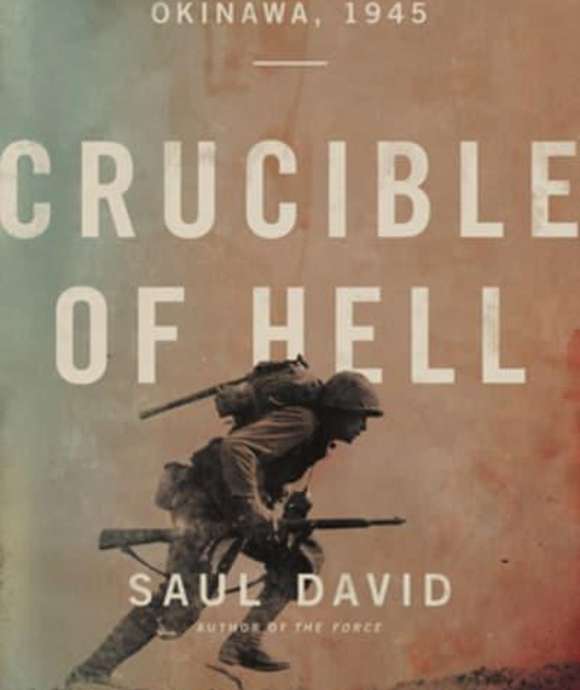
Crucible of Hell: The Heroism and Tragedy of Okinawa, 1945
From the award-winning historian, Saul David, the riveting narrative of the heroic US troops, bonded by the brotherhood and sacrifice of war, who overcame enormous casualties to pull off the toughest invasion of WWII's Pacific theater—and the Japanese forces who fought with tragic desperation to stop them.
Cite this article:
MLA Citation:
APA Citation:
Chicago Style Citation:
